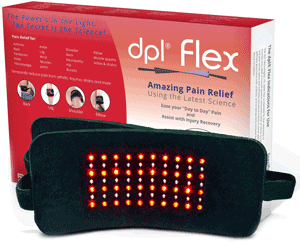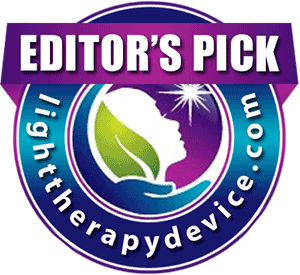In an effort to save money and not have to continually visit a dermatologist for treatment, more and more acne sufferers are turning to in-home blue/red light therapy devices. The lights are designed for use on all skin colors and types. Unlike sunlight, therapeutic lights also emit little to no harmful UVA or UVB rays. Home use blue/red lights vary in price and are either hand-held, worn or stand on a table facing the user.

Table of Contents
Light Therapy Instructions
Acne sufferers must thoroughly cleanse their skin before beginning therapy. Protective eye goggles must be applied before using light therapy on facial regions. In general, affected areas must be exposed to the blue/red light device for up to 15 minutes twice daily. Users must repeat treatments daily in order to obtain maximum benefits. Once the lesions begin disappearing, treatments may be reduced to once daily or two to three times weekly. With the exception of iotretinoin or Accutane, blue/red light therapy is safe to use in conjunction with other topical preparations.
The distance from the light to the affected skin area varies with the type of combination light used. Some devices recommend a distance of 14 to 20 inches. Others are safe enough to apply directly to the skin. To ensure safety, therapeutic light users should follow the manufacturer’s instructions for their particular device.
Benefits of Blue LED Lights
Various studies have shown that devices containing medical-grade blue and red LED lights are effective in treating mild to moderate cases of acne. Blue lights operating at a wavelength of 415nm are absorbed through the skin to sebaceous glands. The light is also absorbed by compounds called coproporphyrin III and protoporphyrin IX, which convert the energy into heat. The heat destroys the Propionibacterium acnes organisms in the skin that contribute to acne lesions.
Benefits of Red LED Lights
Red lights emitted at a wavelength of 633nm have been shown to penetrate more deeply into the skin. The Red light stimulates protoporphyrin IX compounds that eliminate the Propionibacterium acnes microbes that hide within sebaceous glands. Phototherapy using red light has also been proven effective in reducing inflammation by stimulating white blood cells called macrophages to release compounds known as cytokines. The combination of red light effects also triggers the healing process in addition to stimulating the production of collagen and elastin, which give skin a more youthful appearance. Light therapy is known to reduce the secretion of oil glands.
Therapeutic Light Side Effects
When used as directed, devices created for in-home use typically have few side effects. Some may experience a slight irritation or reddening of the skin where treatment was applied. However, the symptom is short-lived.
Blue/Red Light Proven Effective
A group of researchers from the National Medical Center in Seoul, Korea, studied the effects of blue/red light therapy on 24 participants having mild to severe forms of acne. The volunteers were exposed to the therapeutic lights twice each week for four weeks. The team of scientists evaluated the results after two, four and eight weeks. As a whole, the subjects experienced 34.28 percent to 77.93 percent improvement. Additionally, 14 patients reportedly experienced improvement in skin color, tone and texture.
A group of researchers from the Imperial College of Science, Technology and Medicine from Hammersmith Hospital in the United Kingdom also performed a study of blue/red light therapy and achieved similar results. The scientists chose 107 participants having mild to moderate forms of acne vulgaris. The volunteers were divided into four groups. One group received blue light therapy, the second blue/red light therapy, the third cool white light therapy and the fourth were merely treated with 5 percent benzoyl peroxide cream. The skin of each individual was evaluated after four, eight and 12 weeks of treatment. The average rate of improvement in patients receiving blue/red light therapy ranged from 58 to 76 percent. Results varied depending on the severity of the condition.


